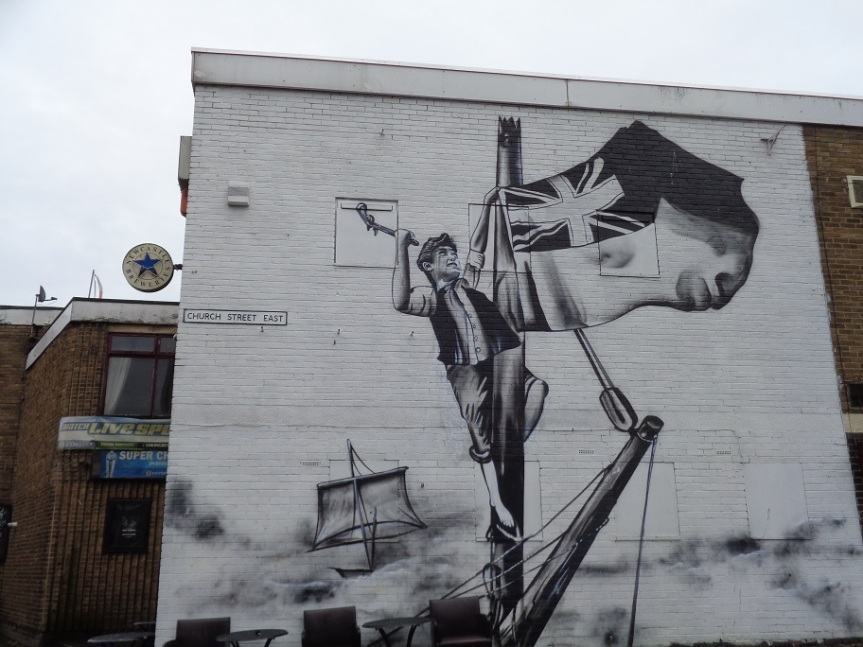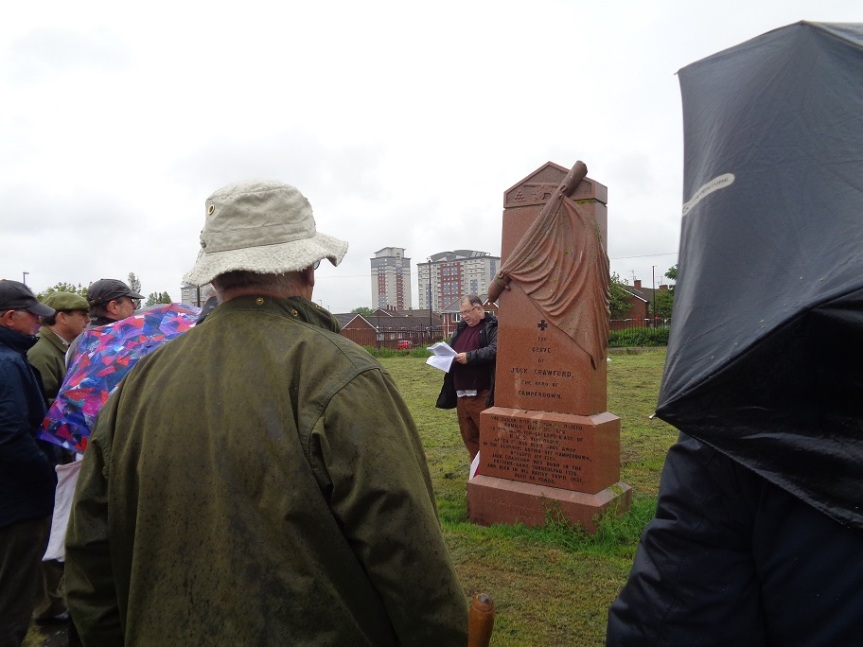
The Collingwood society is beginning to believe that its ‘summer’ outing is cursed – the only time we’ve ever had good weather for it was when we spent the day indoors at the Northumberland Archives. Still, a reasonable number gathered in a very wet Sunderland, where the only question was whether you had come in your waterproof trousers or come with your umbrella.
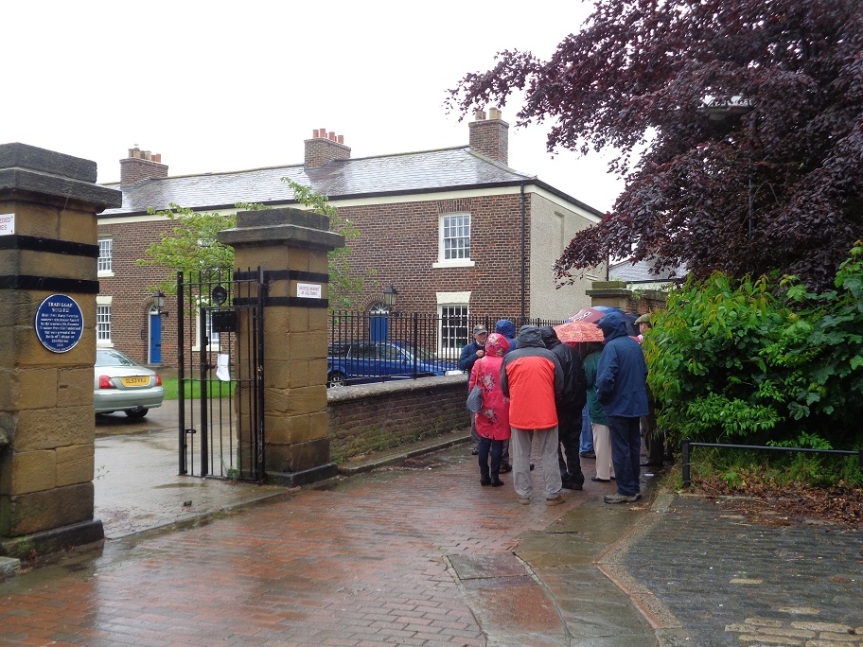
We met first at Trafalgar Square – much smaller than its namesake elsewhere, but still an attractive place. This is a square of early Victorian almshouses, built originally for retired seamen and their families, and still occupied by people who have worked at sea. (Some of them on ferries, apparently.)
The monument in the square records all the Sunderland men who were present at the Battle of Trafalgar. It was erected as part of the Collingwood festival in 2010, and we heard about the research which went into it, making a more accurate list than had existed before by comparing muster lists with other records which showed where they were out of date, still including men who had left the ship or even the navy.
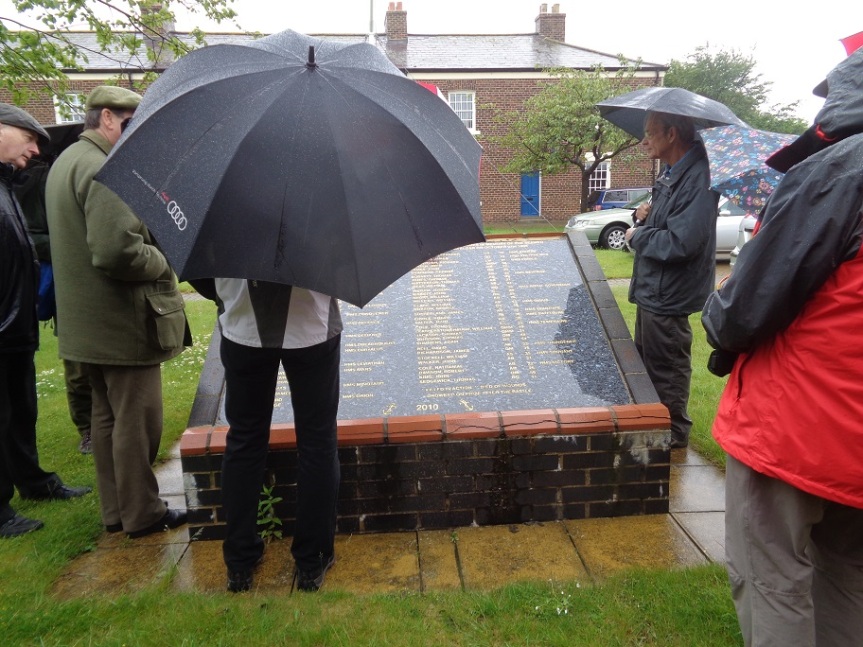
The imposing plaque and crests over the central doorway produced two questions:
– what does INo mean? (John, we think)
– and what on earth are those coats of arms? (approximately Nelson’s)
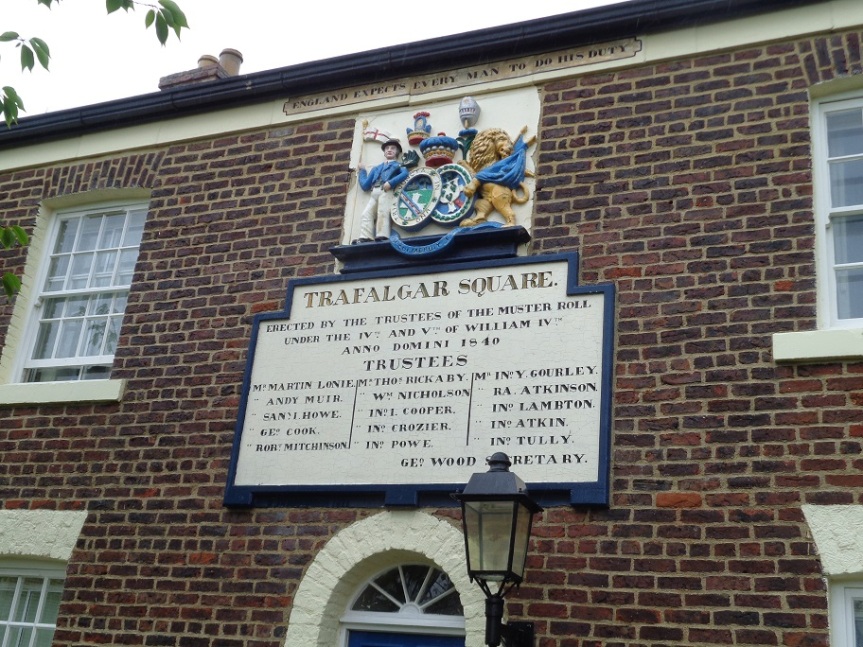
Very close by is Holy Trinity, the original parish church of Sunderland when it split from Bishopwearmouth (whose parish church is now back in the centre of Sunderland, the town having moved towards the sea and back again!)
It’s an impressive building which looks quite unusual to me, because although I’m used to Georgian architecture, I’m not very used to brick.
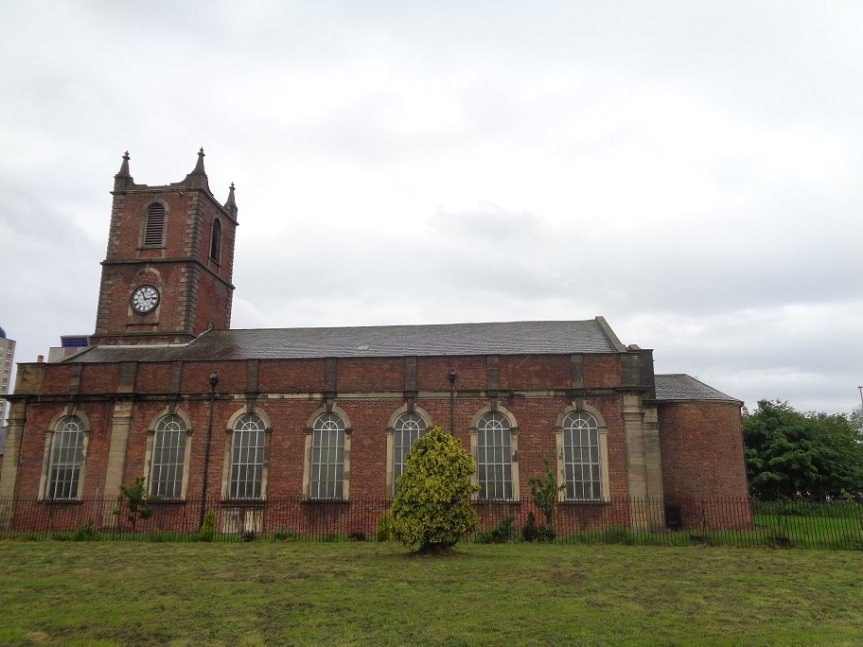
We stopped in the churchyard to hear a bit about the early history of Sunderland (and the rivalry with Newcastle which goes back to the Civil Wars, if not before).
Most of the churchyard has been cleared, but one of the remaining monuments is to a local naval hero, Jack Crawford, famous for nailing the colours of HMS Venerable to the mast during the Battle of Camperdown. He eventually died in poverty, one of the victims of a cholera epidemic in 1831, and was buried in an unmarked grave, but a minument was put up nearby in 1888.
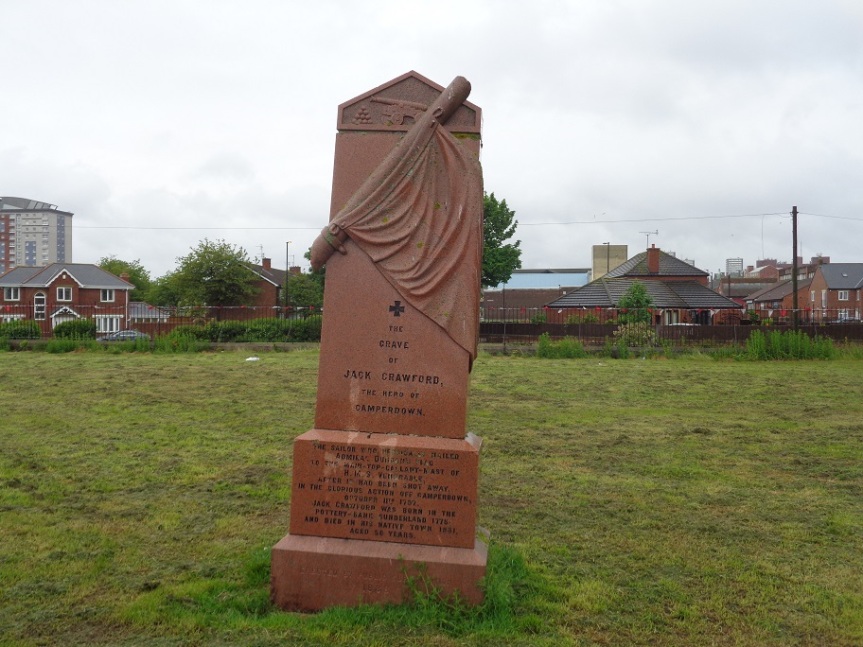
We then went to visit Sunderland Maritime Heritage, who have built a model of the Venerable, so large that it is almost a small boat in its own right.
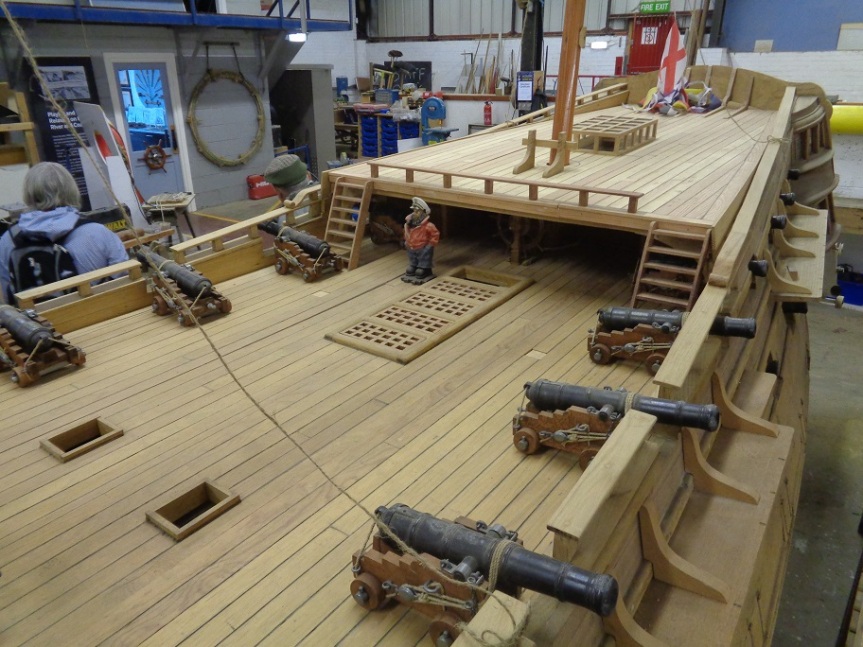
They’re not exactly sure that Bede was the original figurehead, but it would be a very appropriate local link!
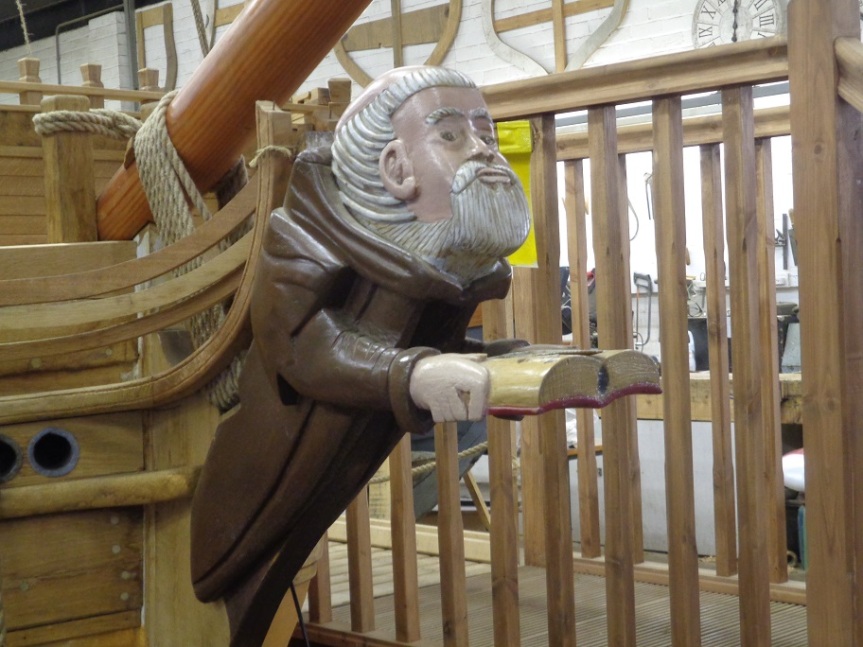
Venerable was the flagship of Admiral Duncan at the time of the battle, and so the centre has made a link with the modern HMS Duncan, which they are very proud of.
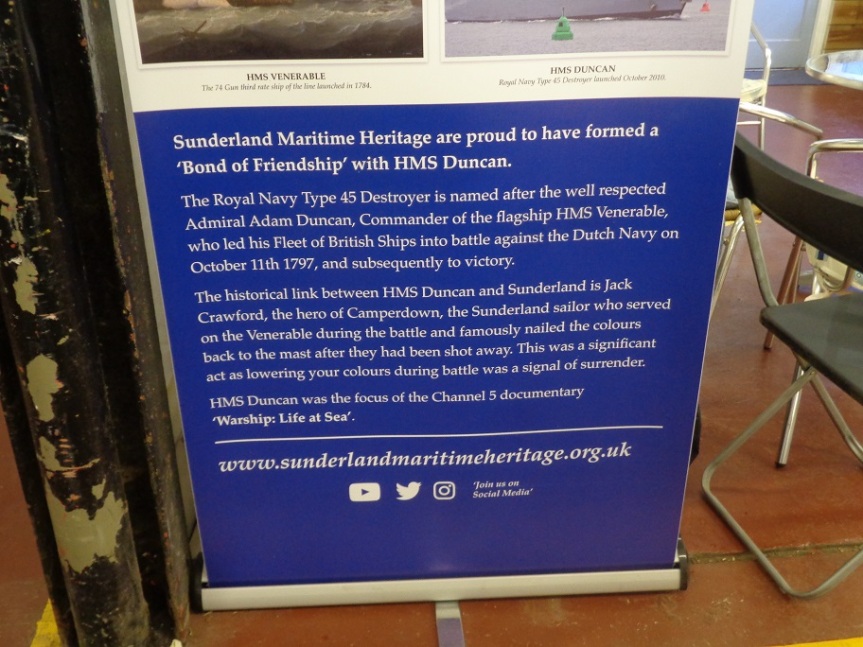
They have a variety of things on display from different periods of Sunderland’s history – my favourite was a large copy of a Georgian map of the town, but there is also quite a lot from the 20th century, and another of their prized possessions is one of the ‘small ships’ which went to Dunkirk, kept in the harbour. At the moment she is inside the security gates, and we had to be taken down by people with passes, but they’re working on finding a better place for her.
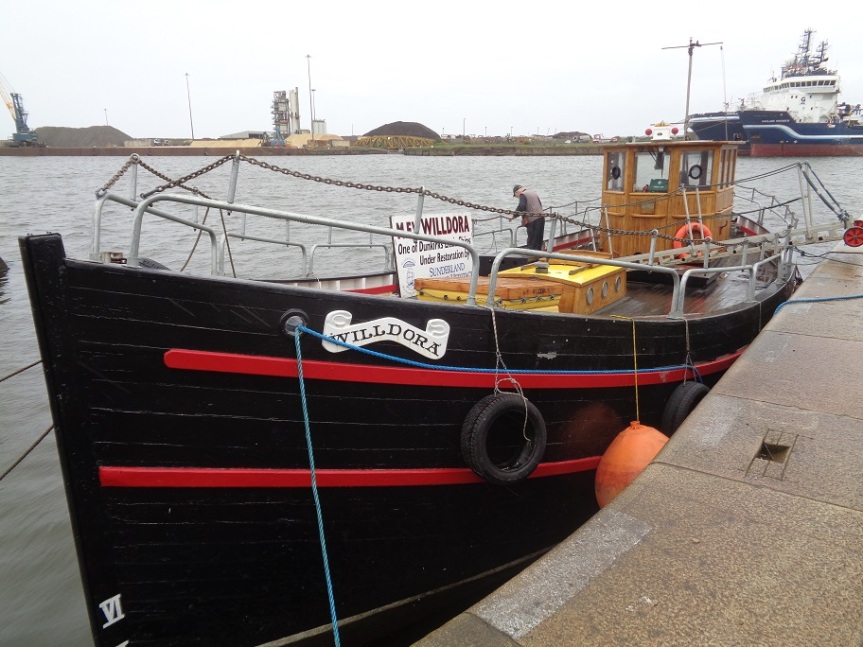
Like Admiral Duncan, Willdora was originally Scottish, which pleased me!
Jack Crawford is obviously the local hero – there’s another monument to him up in the newer part of town, which I meant to visit but ended up going for lunch instead, and while walking back from lunch we passed this mural.
